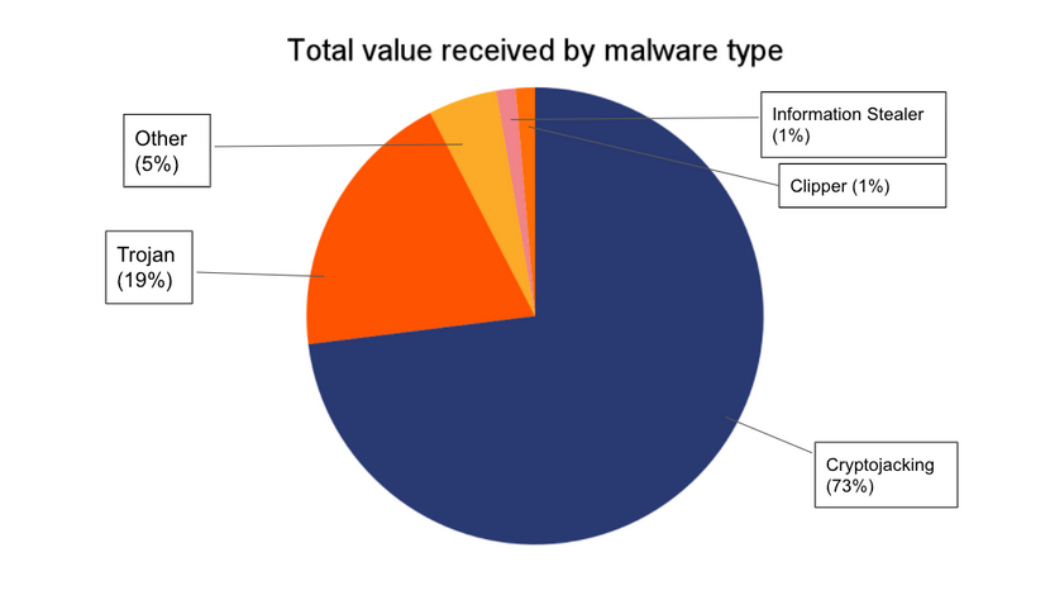Information stealers
‘Less sophisticated’ malware is stealing millions: Chainalysis
Cryptojacking accounted for 73% of the total value received by malware related addresses between 2017 and 2021, according to a new malware report from blockchain analysis firm Chainalysis. Malware is used to conduct nefarious activity on a victim’s device such as a smartphone or PC after being downloaded without the victim’s knowledge. Malware-powered crime can be anything from information-stealing to denial-of-service (DDoS) attacks or ad fraud on a grand scale. The report excluded ransomware, which involves an initial use of hacks and malware to leverage ransom payments from vicitms in order to halt the attacks. Chainalysis stated: “While most tend to focus on high-profile ransomware attacks against big corporations and government agencies, cybercriminals are using less sophisticated typ...
‘Less sophisticated’ malware is stealing millions: Chainalysis
Cryptojacking accounted for 73% of the total value received by malware related addresses between 2017 and 2021, according to a new malware report from blockchain analysis firm Chainalysis. Malware is used to conduct nefarious activity on a victim’s device such as a smartphone or PC after being downloaded without the victim’s knowledge. Malware-powered crime can be anything from information-stealing to denial-of-service (DDoS) attacks or ad fraud on a grand scale. The report excluded ransomware, which involves an initial use of hacks and malware to leverage ransom payments from vicitms in order to halt the attacks. Chainalysis stated: “While most tend to focus on high-profile ransomware attacks against big corporations and government agencies, cybercriminals are using less sophisticated typ...

